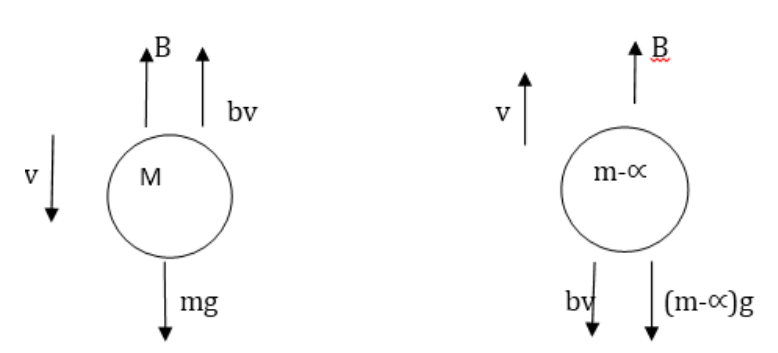The force of buoyancy exerted by the atmosphere on a balloon is $B$ in the upward direction and remains constant. The force of air resistance on the balloon acts opposite to the direction of velocity and is proportional to it. The balloon carries a mass $M$ and is found to fall down near the earth's surface with a constant velocity v. How much mass should be removed from the balloon so that it may rise with a constant velocity v?

$\mathrm{B}+\mathrm{bv}=\mathrm{mg}$
$B=b v+(m-\propto) g$
$\mathrm{Bv}$ is constant
$M g-B=B-\left(M^{\propto}\right) g$
$2 \mathrm{Mg}=2 \mathrm{~B}+{ }^{\propto} \mathrm{g}$
$\propto_{=2}\left(M m-\frac{B}{g}\right)$
Click here to get exam-ready with eSaral
For making your preparation journey smoother of JEE, NEET and Class 8 to 10, grab our app now.
